There’s no place in Istanbul quite like the Basilica Cistern.
Down a short set of stairs from the city’s surface, the noise of Istanbul dissolves into stillness. You step into a subterranean world of vaulted ceilings and mirror-still water, where light glows amber and green across endless rows of ancient columns. It feels like time folds in on itself here—imperial Rome, Byzantine shadow, and contemporary art all colliding in an eerie hush.
We were surprised by just how transporting it felt. The cistern is not enormous, but it is enveloping. It holds you. Sounds become echoes. The scent of damp stone hangs in the air. You might find yourself walking more slowly, whispering without knowing why.
It’s also incredibly photogenic—if you’re someone who travels with a camera, you’ll want time to linger here. But you won’t get that experience if you’re stuck outside in a long queue, shoulder-to-shoulder in the sun.
That’s why we strongly recommend getting skip-the-line tickets in advance—they cost only a little more, but they save you a lot of waiting (especially if you’re not part of a guided group). We’ve linked the tickets we used right here—they let you bypass the crowds and enter at your own pace.
A hidden city beneath Istanbul
Descend the 52-step staircase, and emerge into another world. The Basilica Cistern sprawls beneath the city’s oldest quarter, about 150 meters from Hagia Sophia. Built in the 6th century by Emperor Justinian I, this massive subterranean reservoir once held 80,000 cubic meters of water—enough to irrigate a small kingdom, sourced via the ancient Valens and Mağlova aqueducts. Today, only a shallow pool remains, reflecting glowing columns and submerged history in ghostly ripples.
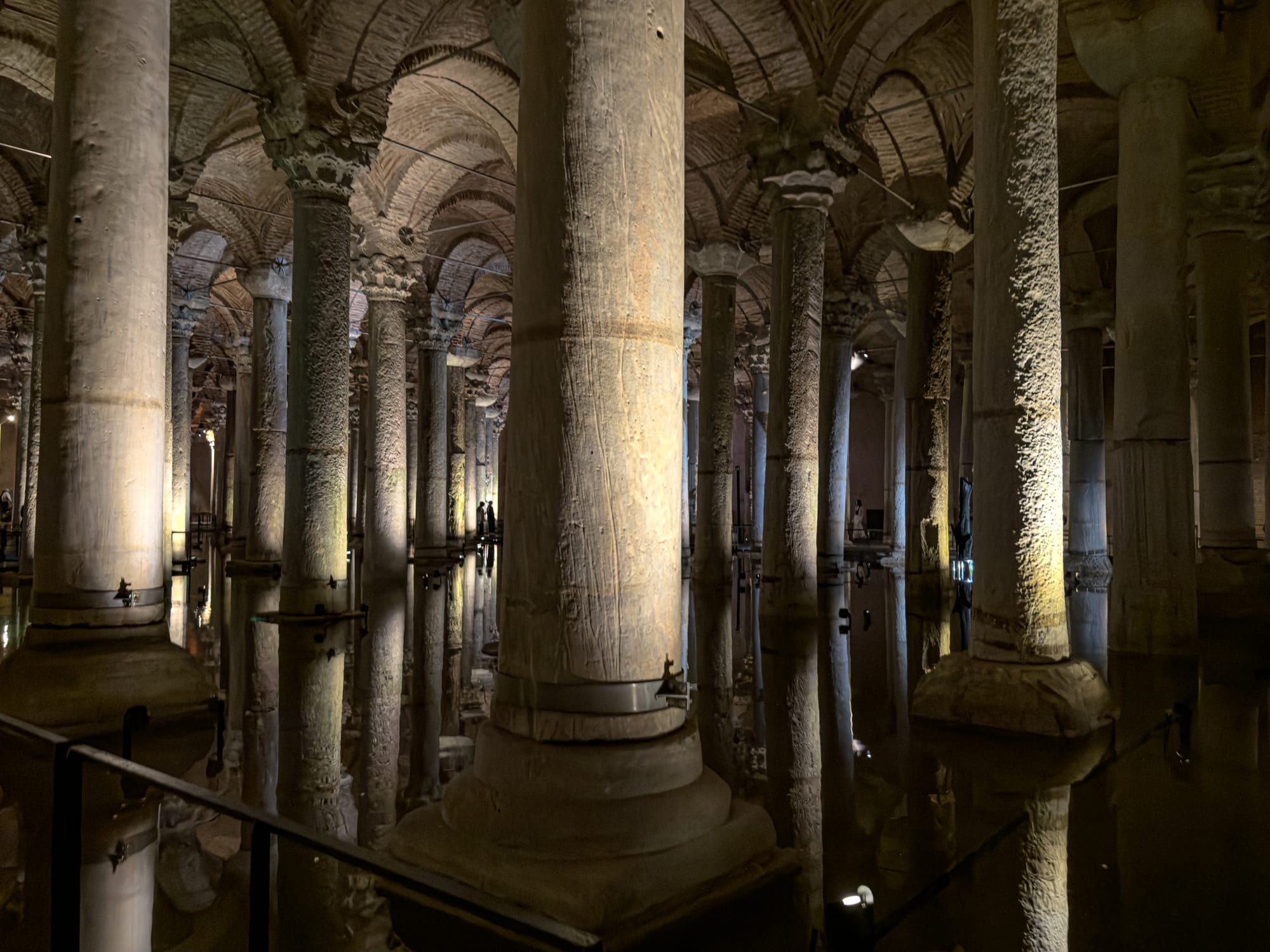
With its vaulted ceilings and forest of more than 300 marble columns, each one repurposed from ruins of the Roman Empire, the cistern feels more like a cathedral or a dream than a water tank. In fact, 16th-century traveler Petrus Gyllius described the drifting fishes below your boat like “a perfect wilderness of tall, slender columns.” Mark Twain, too, called it the “Thousand-and-One Columns.” For many, it’s Istanbul’s most unforgettable indoor space.
The Medusa heads: myth, mystery & symbolism
Hidden in the northwest corner, two marble heads prop up columns—stacked with one upside down and the other placed on its side. These are Medusa, the stone-turning Gorgon from ancient myth, repurposed here under Byzantine rule.
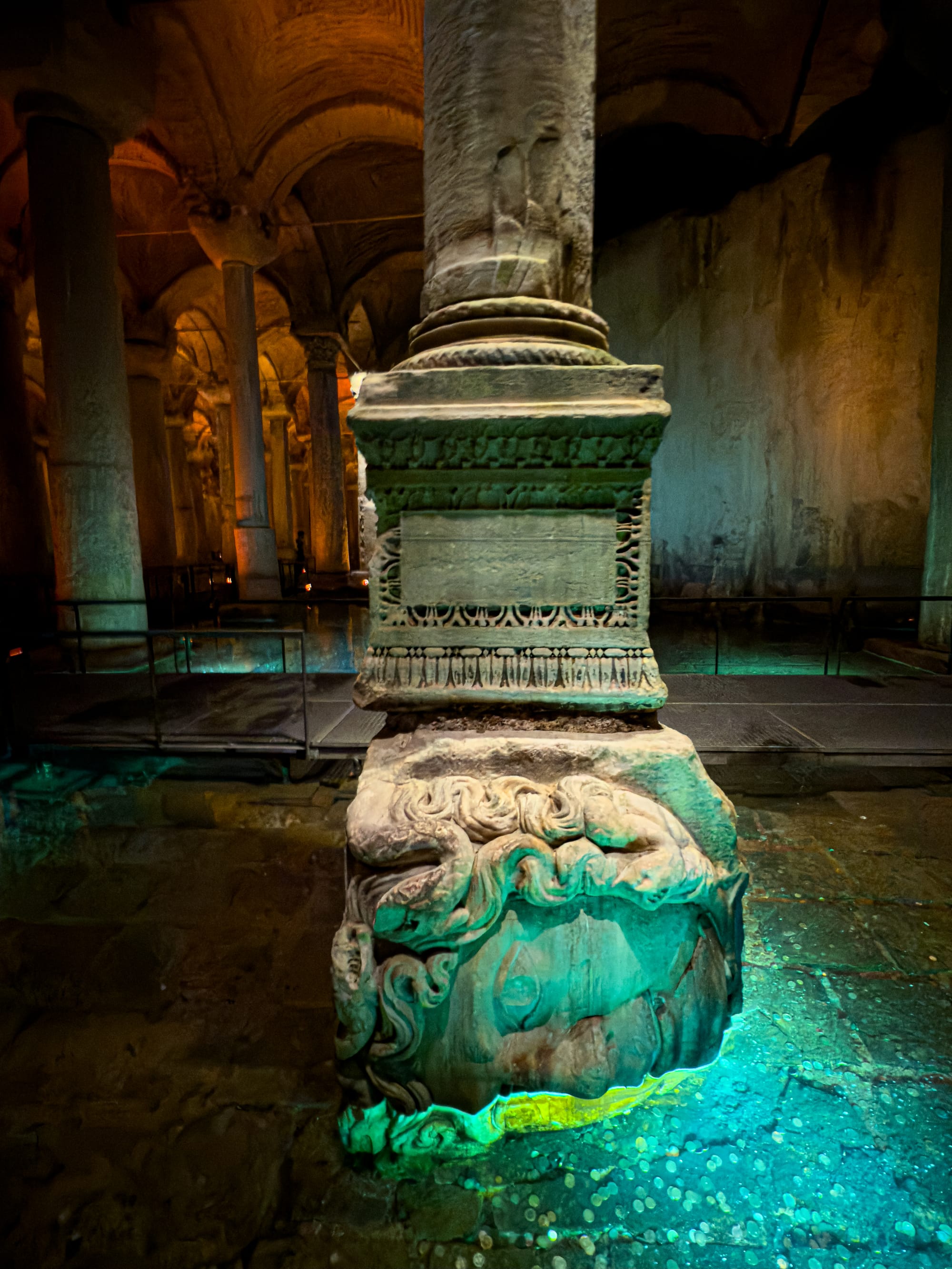
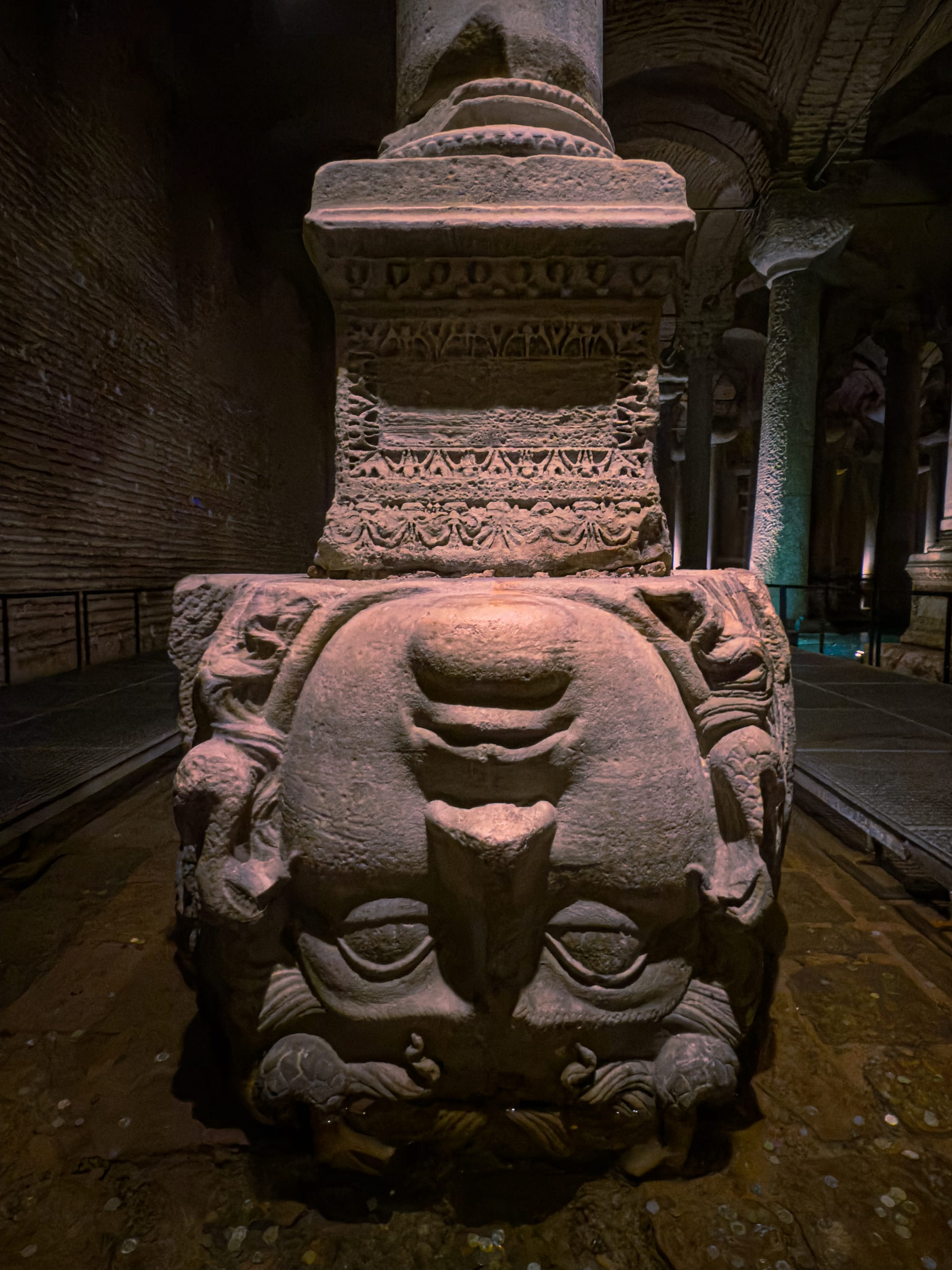
Two mysterious Medusa heads support ancient columns in the depths of the Basilica Cistern
Their exact origins remain unknown, though scholars speculate they were brought from a Roman-era building, possibly a temple. The carving is coarse compared to the rest of the structure, yet it draws nearly every visitor into pause. The stone itself is deeply weathered, with algae softening the eyes, and cracks running through her tangled, snake-like hair.
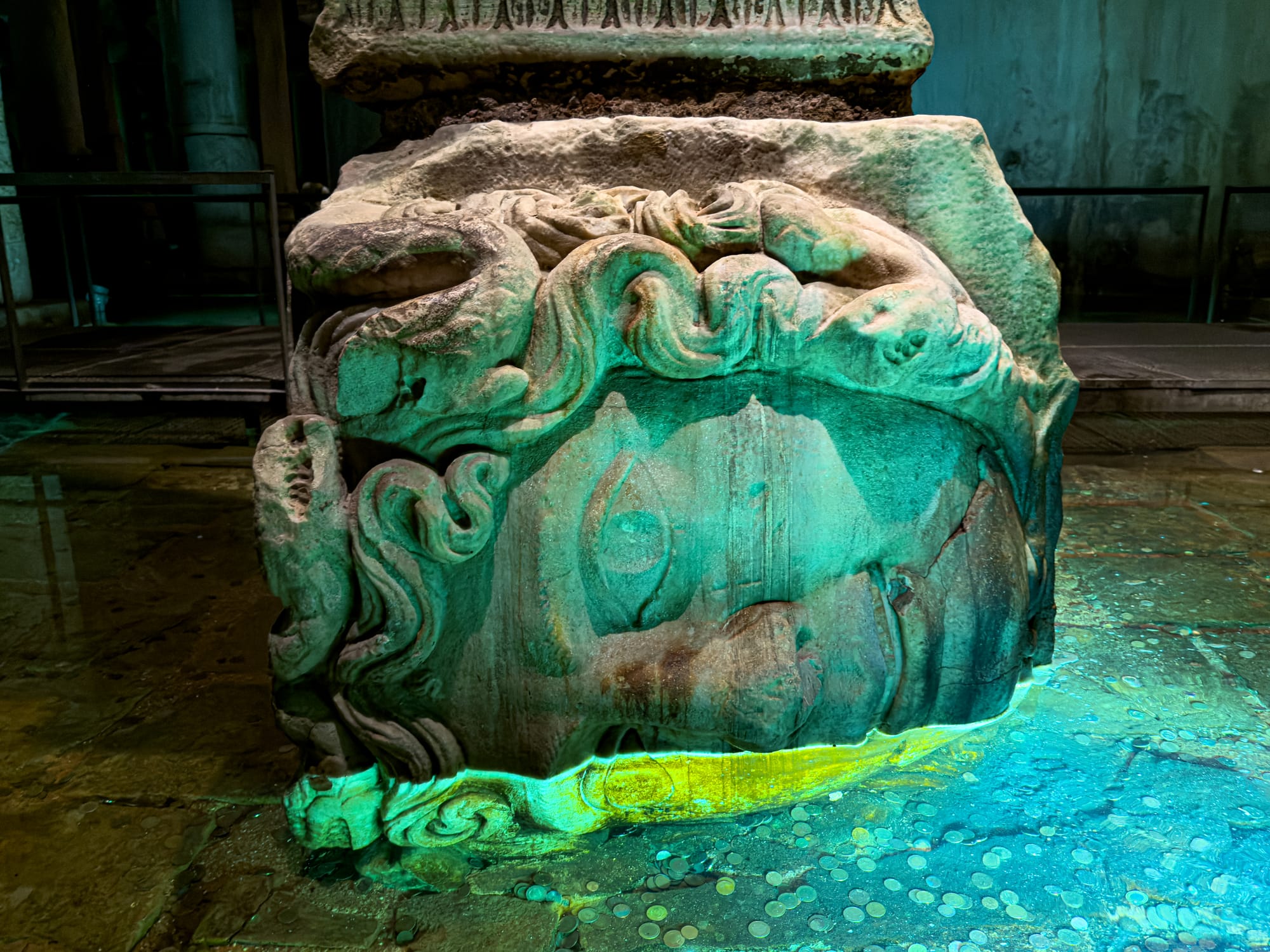
Why are they inverted? No one knows for sure. Some say the heads were flipped to negate Medusa’s petrifying gaze. Others believe it was a Christian rejection of pagan symbolism. More poetic theories suggest spiritual guardianship—that she was placed here not to threaten, but to protect the water below. Perhaps most simply, they were laid this way to fit.
But to encounter them is to enter myth through the side door. These aren’t museum pieces sealed behind glass—they’re active, embedded parts of a living structure. Their eerie, grounded gaze makes this space feel older than it is, haunted by stories not fully told.
Column designs & hidden details
The Basilica Cistern’s 336 columns are not uniform. Many are mismatched, bearing scars of different centuries. Some have Ionic scrolls or Corinthian flourishes; others are plain, cylindrical, utilitarian. Most were scavenged from earlier Roman temples and public spaces—a process known as spoliation, common throughout Byzantine architecture.
But there are details here worth slowing down for. One of the most distinctive is the so-called “Hen’s Eye Column,” covered in teardrop-like carvings. Some believe it’s a quiet memorial to the lives lost in the construction of the cistern—a monument to the workers whose names we never knew. The tears glisten when caught in the right light, and droplets of water often cling to them, as if the column itself were weeping.
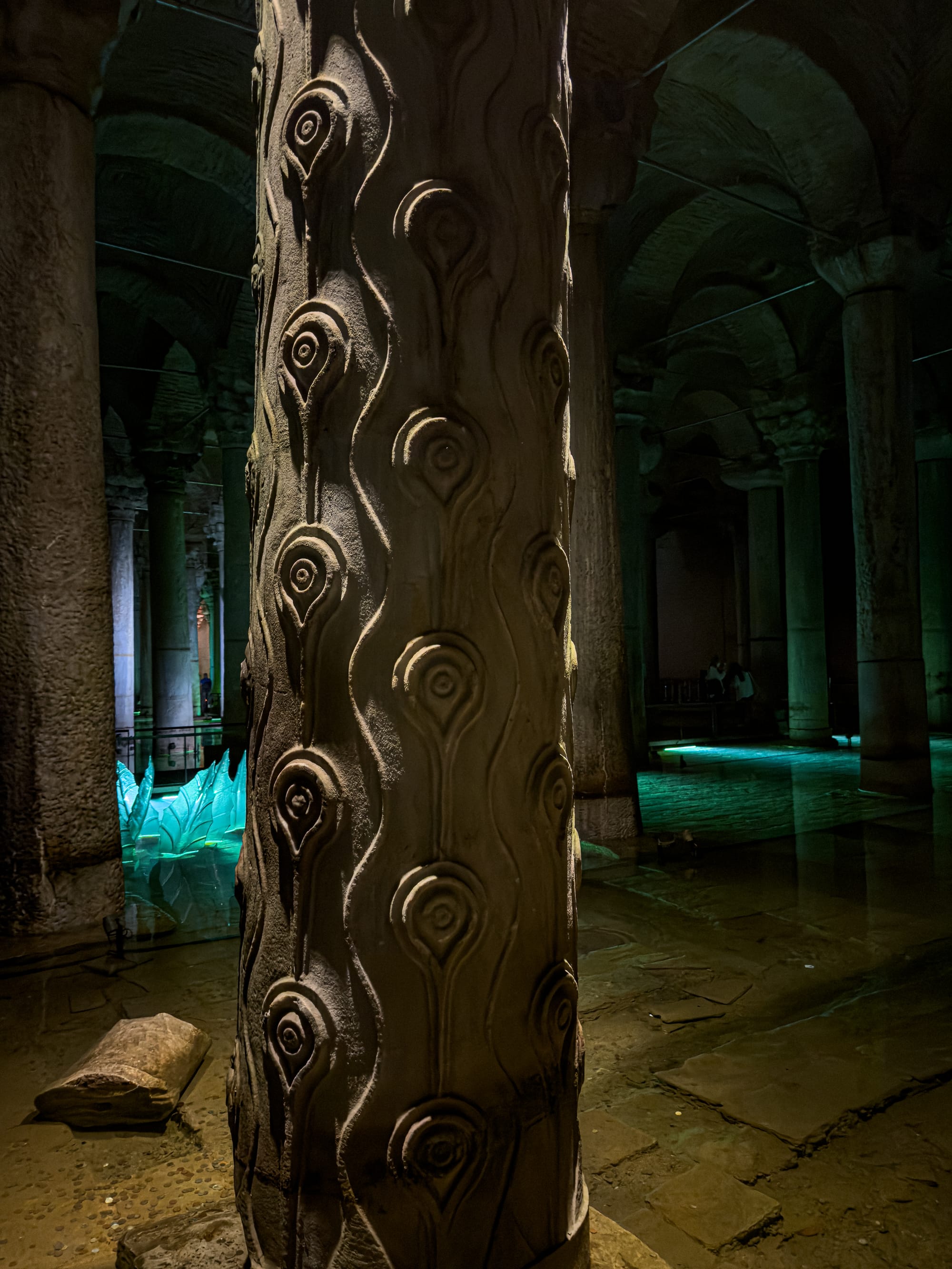
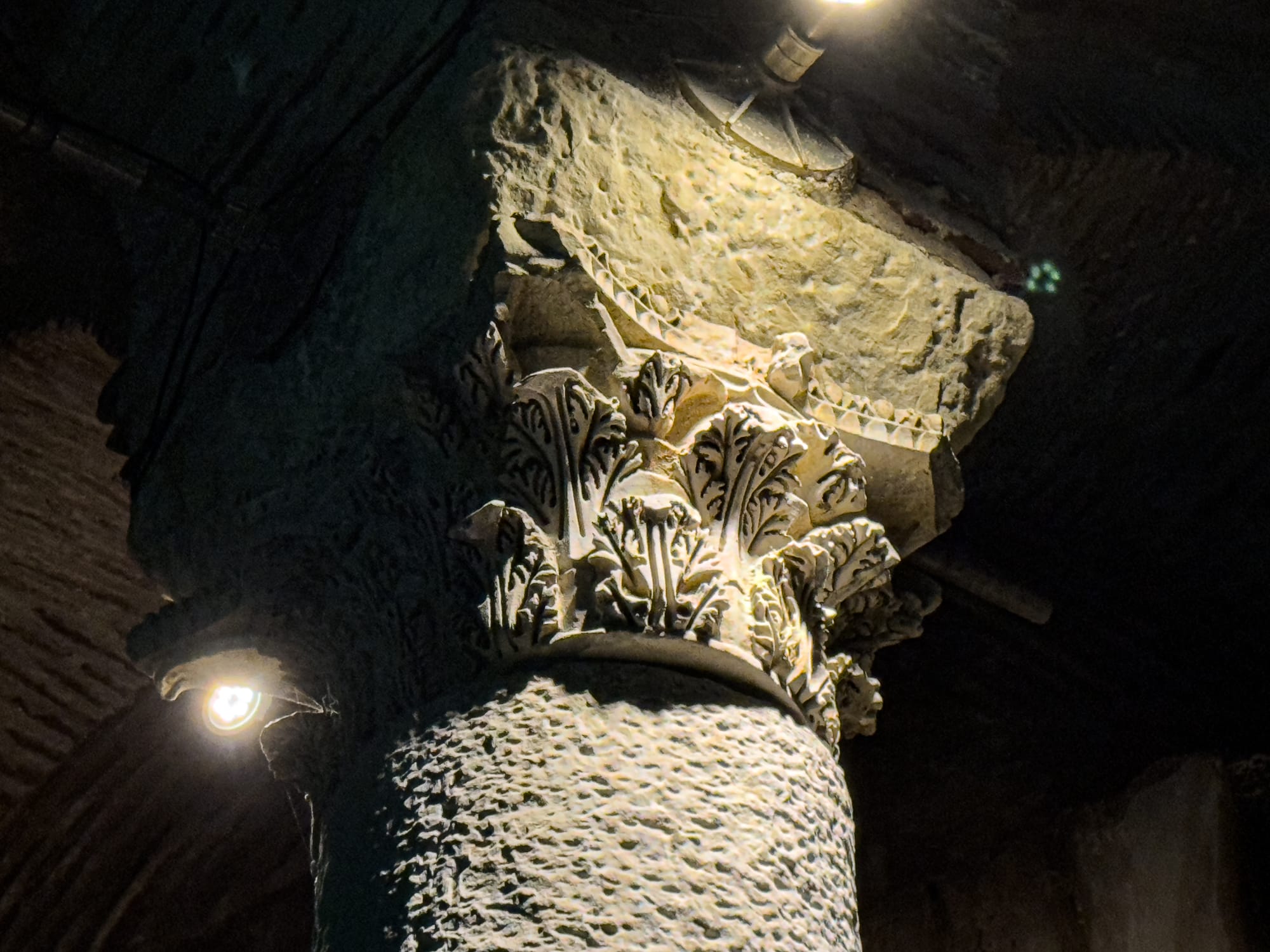
From peacock feather carvings to Corinthian capitals, the Basilica Cistern hides quiet intricacy in stone
Elsewhere, delicate vines and floral motifs curl around the stone—residues of a time when even utility demanded beauty. Some carvings appear to depict laurel wreaths or palm fronds; others have geometric or abstract patterns that may have once held symbolic meaning. Much of the stone was likely lifted from sacred structures and temples, and in their new setting, the carvings have become quiet witnesses.
Look closer, and you may even find faint graffiti etched centuries ago—marks of passing lives, initials and symbols obscured by time. The cistern is not just one story, but many layered silently on top of each other.
Lost and rediscovered
For centuries, the cistern lay buried in memory. Locals sometimes knew it as a dark, mysterious space beneath their homes, drawing up water through holes in the floor, or even fishing from inside their basements. But its scale and significance were forgotten until the 16th century, when Dutch scholar Petrus Gyllius reintroduced it to the Western world.
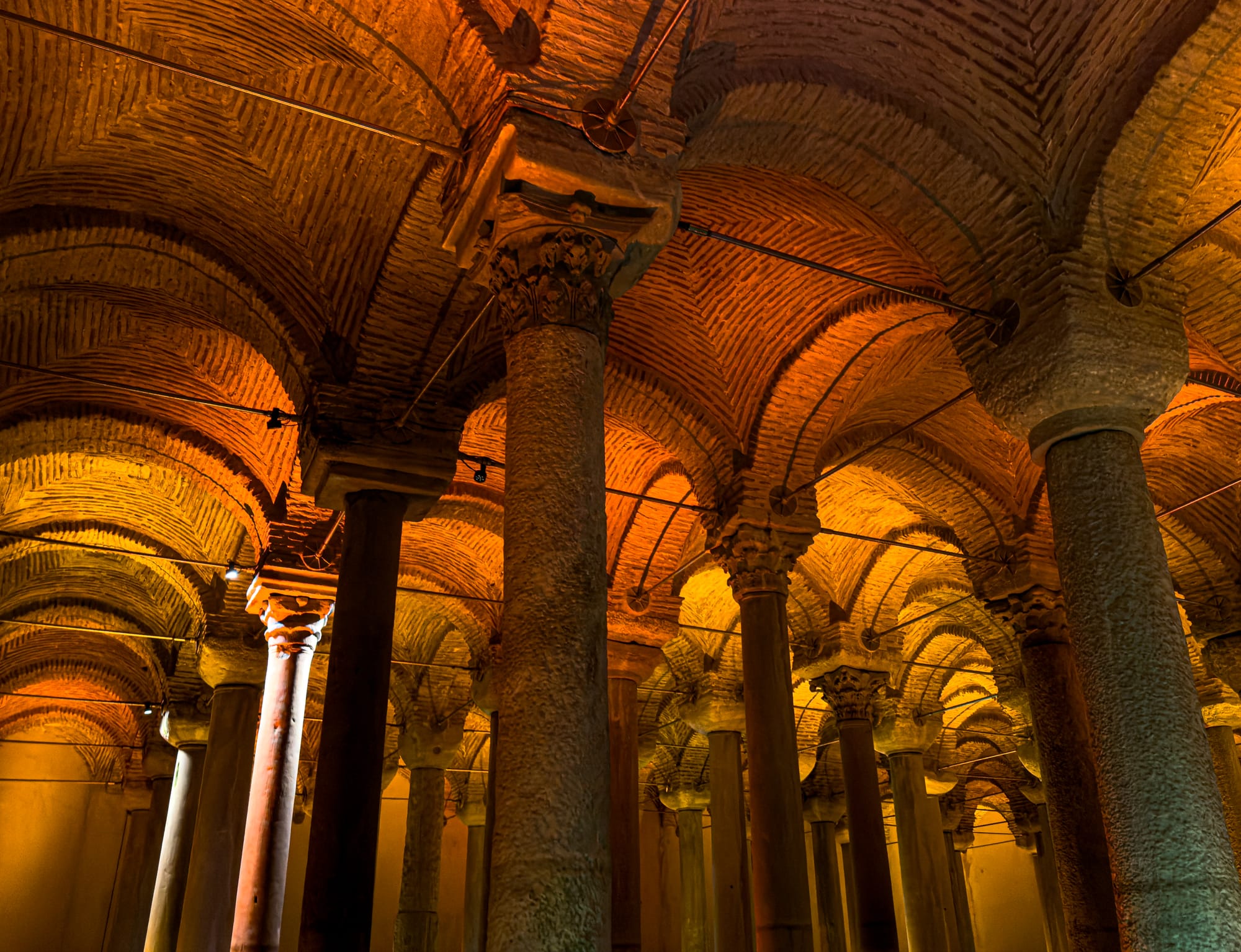
It wasn't until the 1980s that major restoration work was undertaken. Walkways were installed, lights added, and stagnant waters cleared. Since then, the cistern has become one of the most visited sites in Istanbul. But despite the crowds, it hasn’t lost its hush. Its silence is structural.
Light, sound, and shadow: the modern atmosphere
Today, the Basilica Cistern feels more like a site-specific installation than a historic ruin. Carefully curated lighting draws up the damp sheen of each pillar. The water glows blue-green in some corners, amber-orange in others. Spotlights rest on statues, the Medusa heads, or sometimes nothing at all—just the architecture itself.
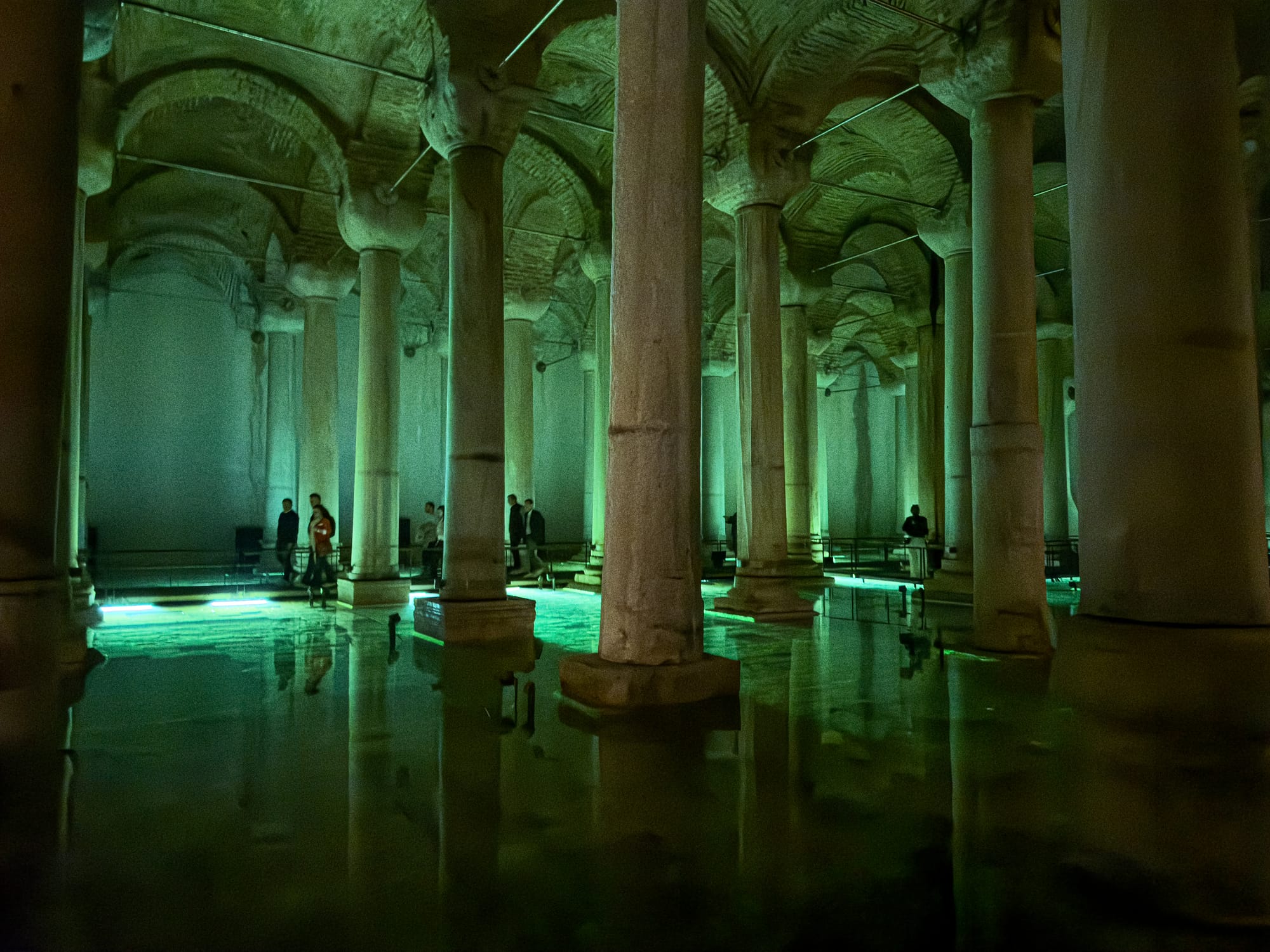
In recent years, rotating art installations have deepened the mood. One featured long-legged jellyfish sculptures with glowing blue bulbs, seeming to float above the waterline. Another brought in sound design—low frequency hums and echoes layered into the space like wind brushing through history.
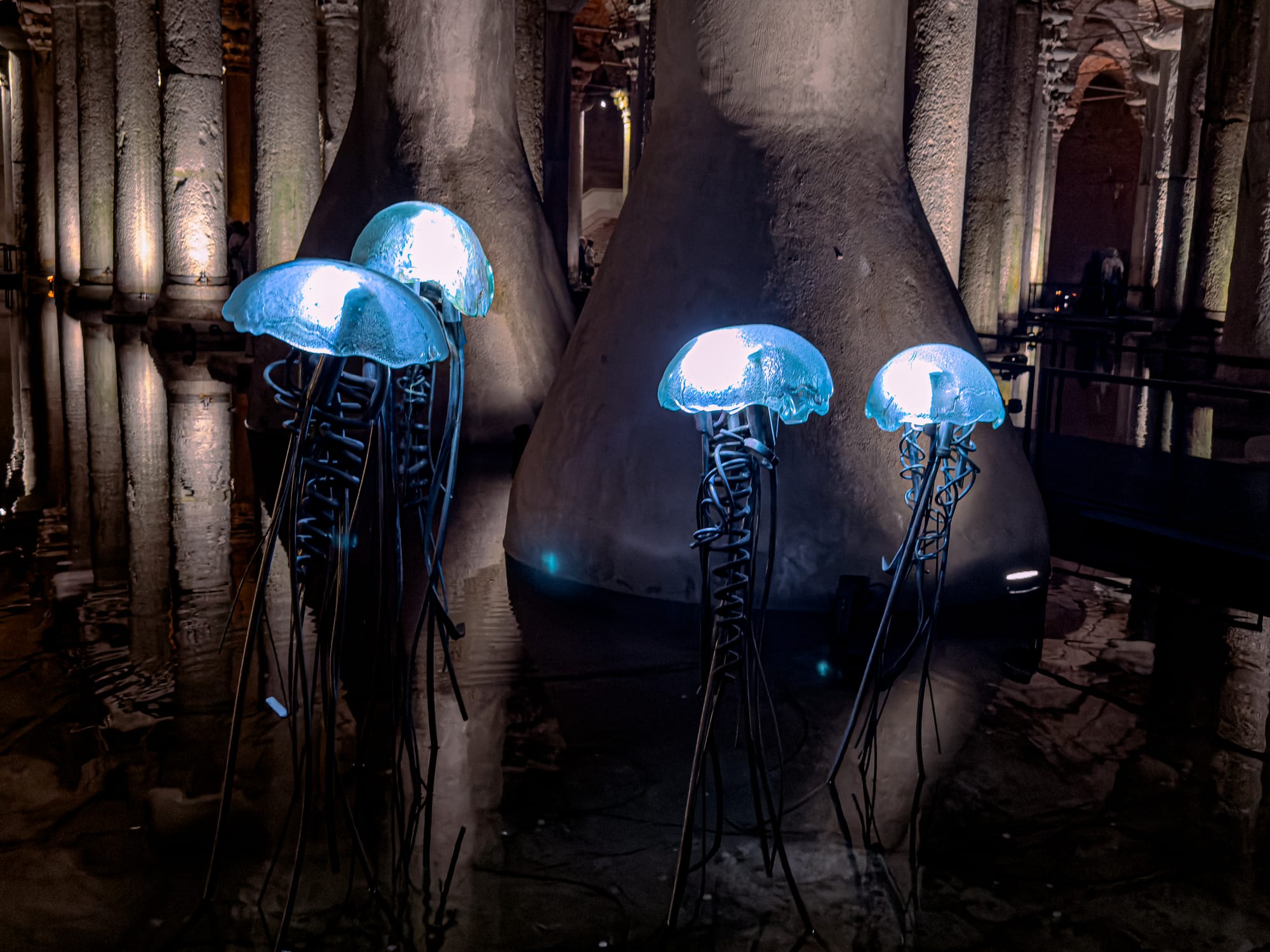
These additions never overwhelm the place; they expand it. The cistern resists commodification. It can host art without losing its own voice.
Go alone
Even if you’re not traveling solo, carve out time to explore the cistern alone. There’s something solitary about its beauty—not in a lonely sense, but a contemplative one. It asks you to slow down, to breathe, to walk without speaking. It’s not a place for narration or explanation. It’s a place to feel.
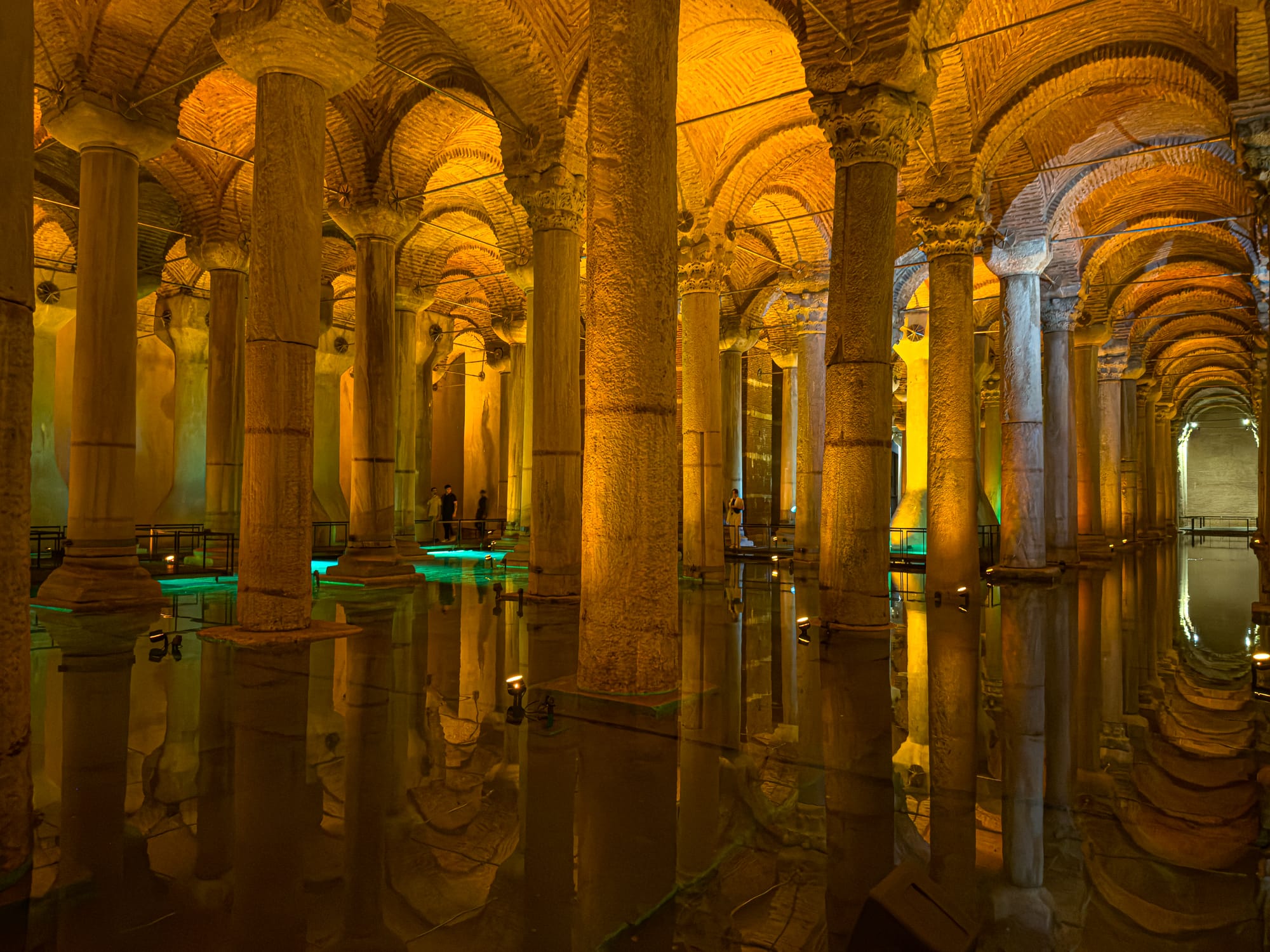
Your footsteps echo back at you. The lights pulse in subtle rhythms. And the chill in the air—a constant, gentle reminder that you are underground, walking through water and time.
Echoes in stone
The Basilica Cistern is Istanbul condensed: history flowing in darkness, myth repurposed for water, columns that whisper of vanished empires. It’s eerie, graceful, mysterious—and deeply cinematic.
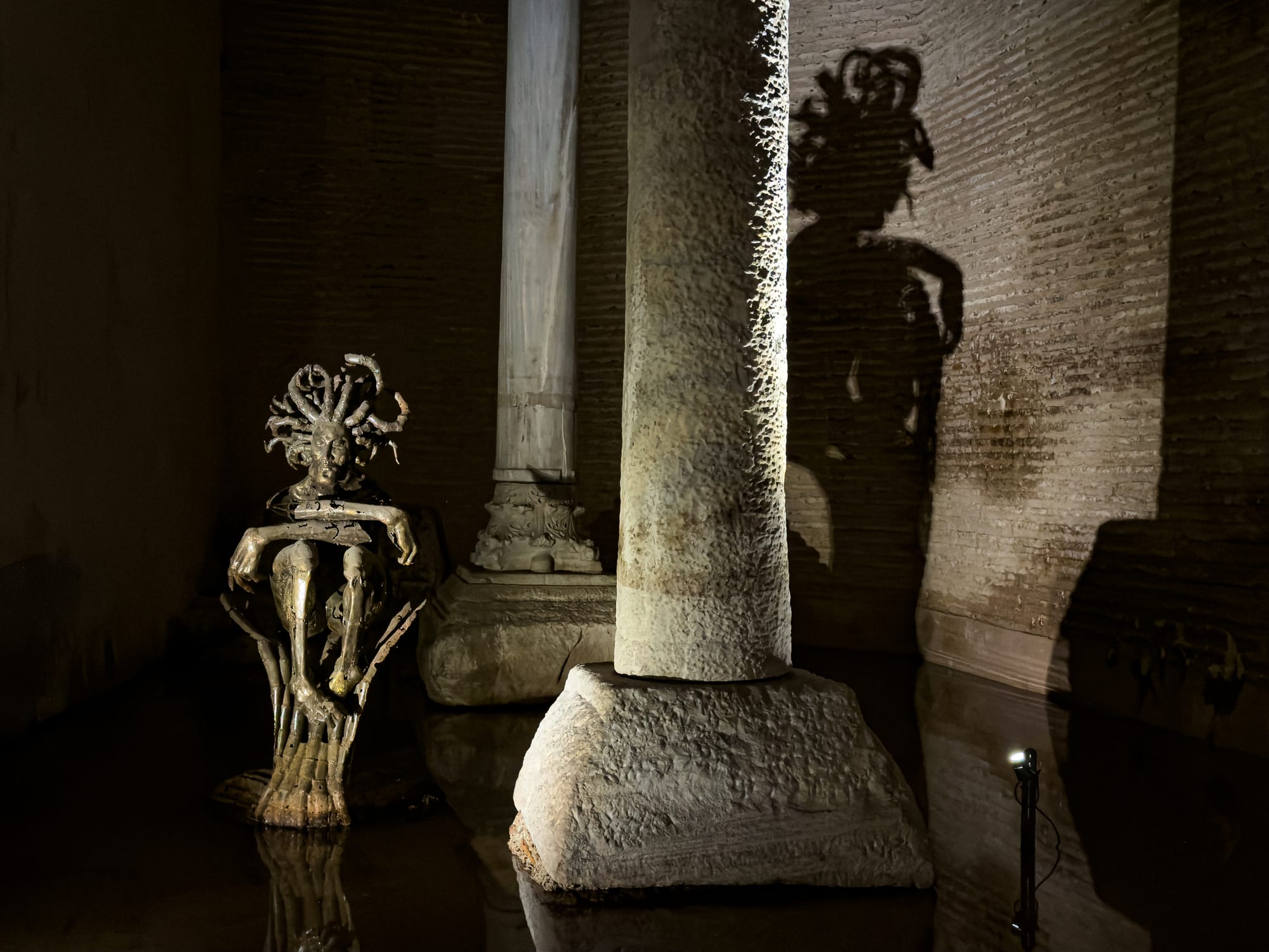
If you visit one historic monument in Istanbul that speaks through atmosphere more than information, let it be this one.
And if you're planning to go: get your skip-the-line ticket here.






